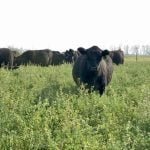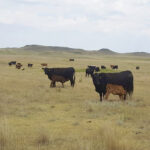
ABP opens up about leaving CCA
Alberta Beef Producers plans to leave Canadian Cattle Association, due to governance and fiscal concerns

Beef industry bids farewell to Charlie Gracey
Gracey was instrumental in developing analytical programs and procedures the beef sector still uses

Follow the money: benchmarking can tell you where to look
National cow-calf cost of production network offers insights on boosting profitability

Be strategic when rebuilding your cattle herd following drought
Rebuilding your herd with your own heifers will be the best option for most operations

Finding treasure by taking a deep dive into cow-calf production data
Cost of Production Network opens a window on how producers like you spend and make money

Cattle producers struggle but beef suppliers are doing just fine
Wholesale beef prices at record levels but those strong prices haven’t made their way to producers

A beefy economic contribution

A little here, a little there — how do you know when costs creep too high?
New cost-of-production program aims to offer cow-calf producers a better way to identify problem areas

‘Light at the end of the tunnel’ as cattle backlog numbers fall
The number of market-ready cattle remains high, but packers have made good progress since spring

New benchmarking program aims to help you up your game
Initiative will not only help cow-calf producers evaluate their performance but become more innovative

